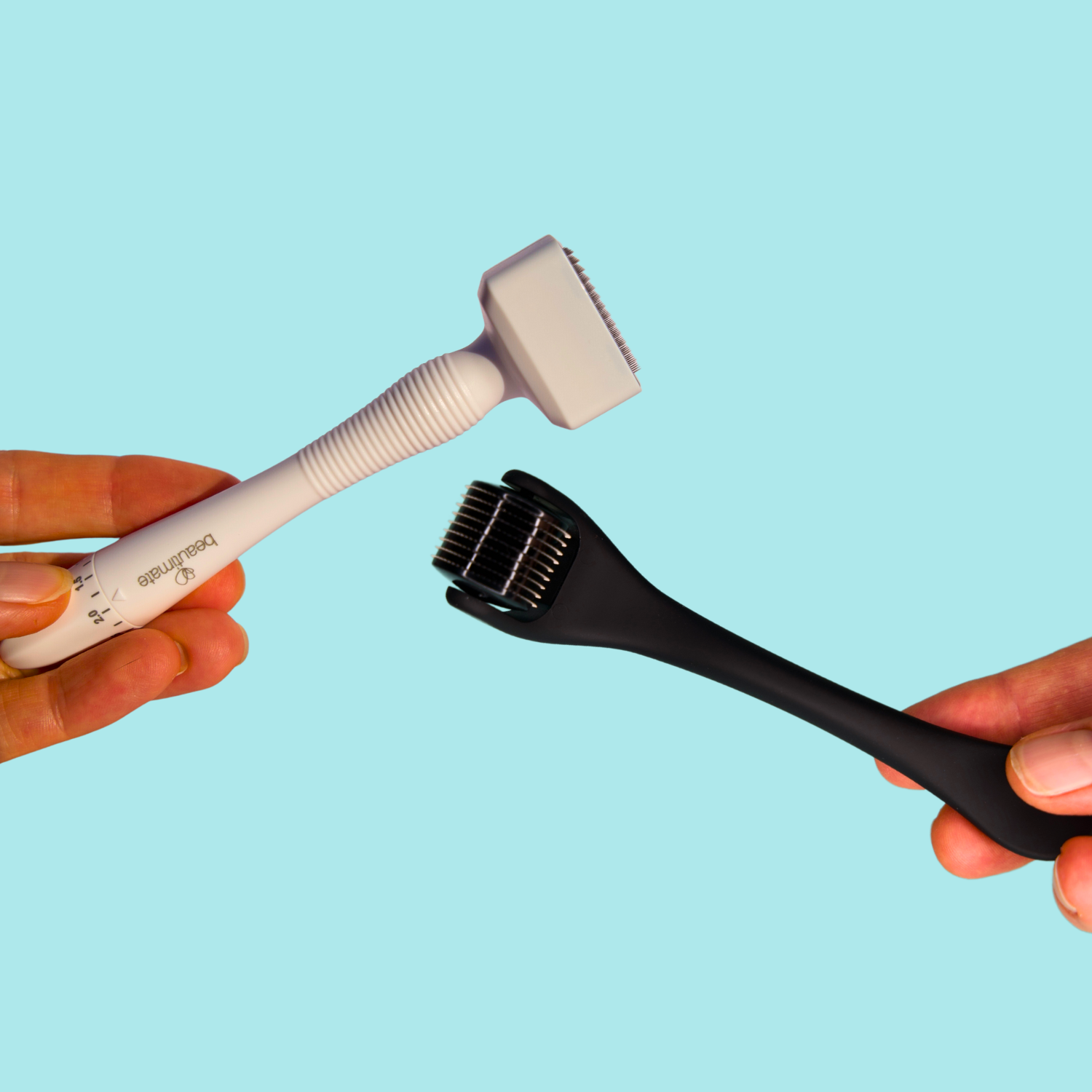Free U.S. Shipping & 30-Day Money-Back Guarantee → Hassle-free shopping

Derma Stamp vs. Derma Roller: Which One is Right for You?
Posted on

When it comes to microneedling, derma stamps and derma rollers are two of the most popular tools for improving skin texture, reducing scars, and promoting hair growth. But which one should you choose? Let’s break it down by benefits, studies, and usage so you can decide what fits your skincare goals best.
The Science Behind Microneedling
Both derma stamps and derma rollers create micro-injuries in the skin, stimulating collagen production and improving serum absorption. This process, known as collagen induction therapy (CIT), is backed by clinical studies showing improvement in acne scars, fine lines, and even hair regrowth when paired with products like hyaluronic acid or rosemary oil.
Derma Stamp

- Vertical stamping motion—less skin dragging
- Precise control over pressure and needle depth
- Ideal for acne scars, hairlines, and targeted areas
- Minimizes irritation on sensitive skin
- Recommended for precision treatments
Derma Roller

- Rolling motion—covers larger areas quickly
- Good for full-face rejuvenation
- Less precise—can drag across skin
- More affordable and beginner-friendly
- Better for general maintenance
Which One Should You Choose?
If you want precision, less irritation, and better serum absorption, a Derma Stamp is the best option.
If you prefer quick, full-face coverage and a more budget-friendly choice, a Derma Roller works well.
Final Thoughts: What Science & Experts Say
Studies show that microneedling boosts collagen, improves scars, and enhances serum absorption—but choosing the right tool matters!
✔ A derma stamp offers precision, less irritation, and deeper product penetration—ideal for acne scars and hair regrowth.
✔ A derma roller covers larger areas but may cause more irritation due to its rolling motion.
👉 Want to see the difference for yourself? Check out our Derma Stamp and Roller Collection Here and experience targeted skincare at home!
Research Sources
LINKS
Statements on this website have not been evaluated by the FDA. Products and content are not intended to diagnose, treat, cure, or prevent any disease.








Leave a comment: